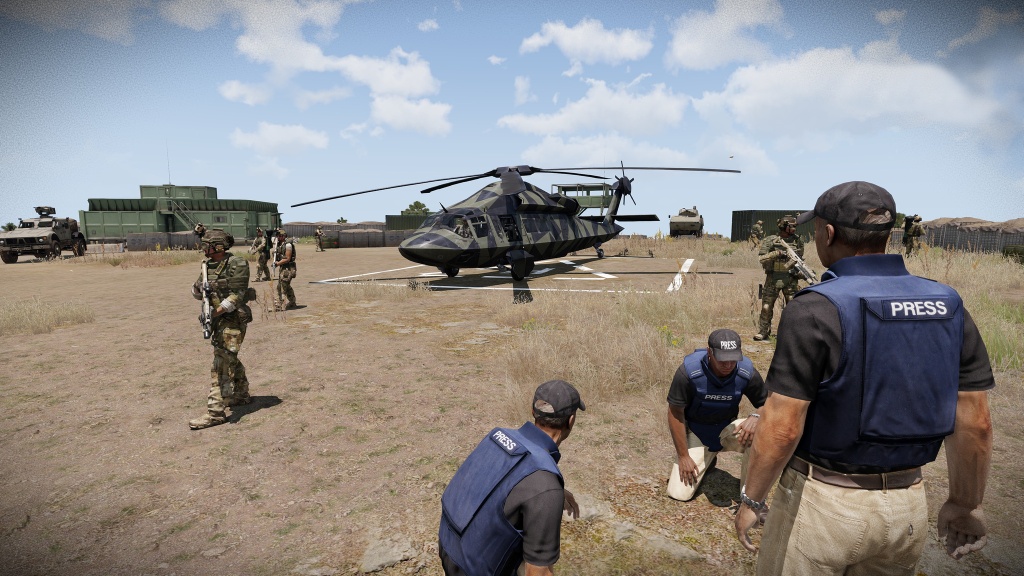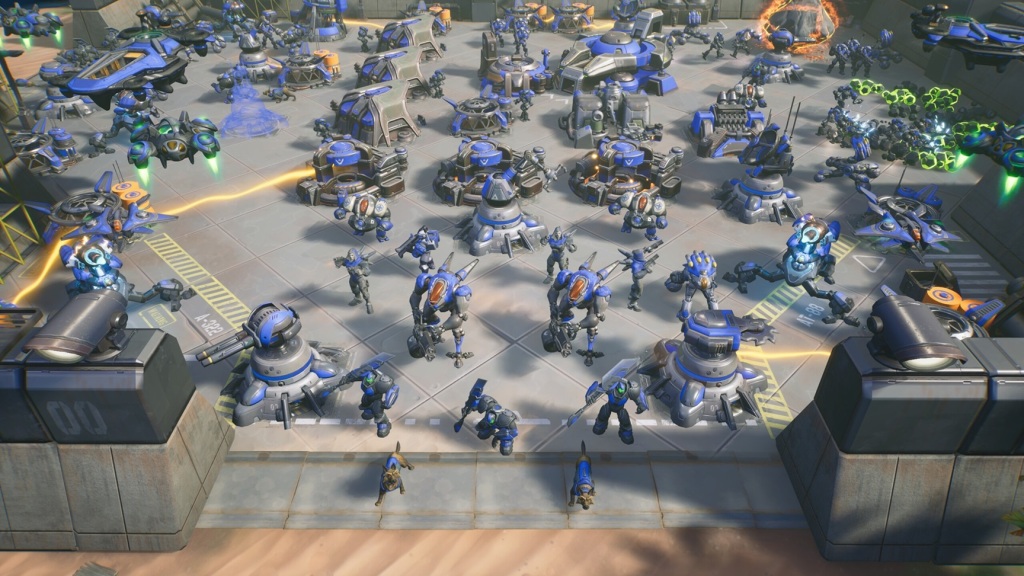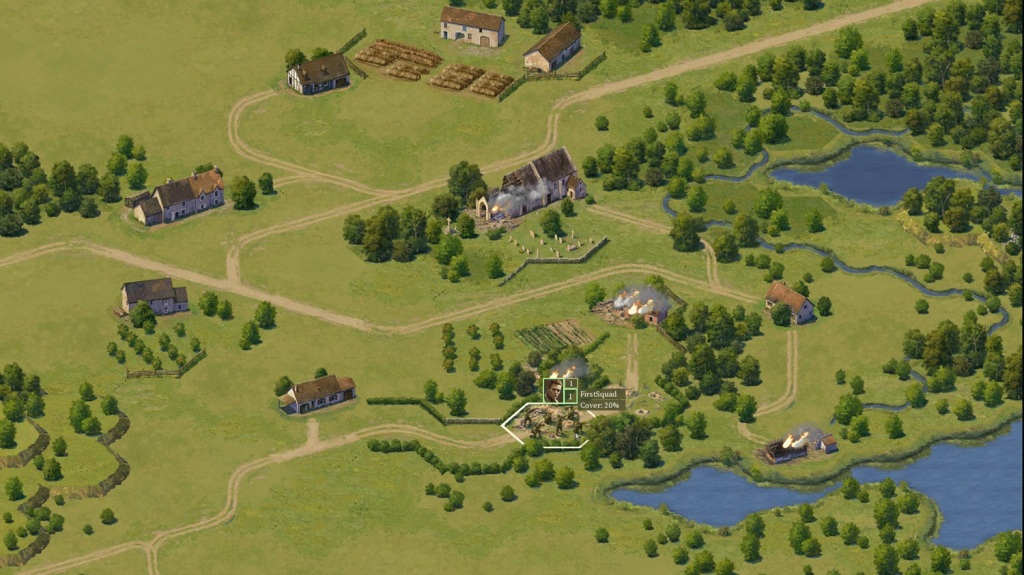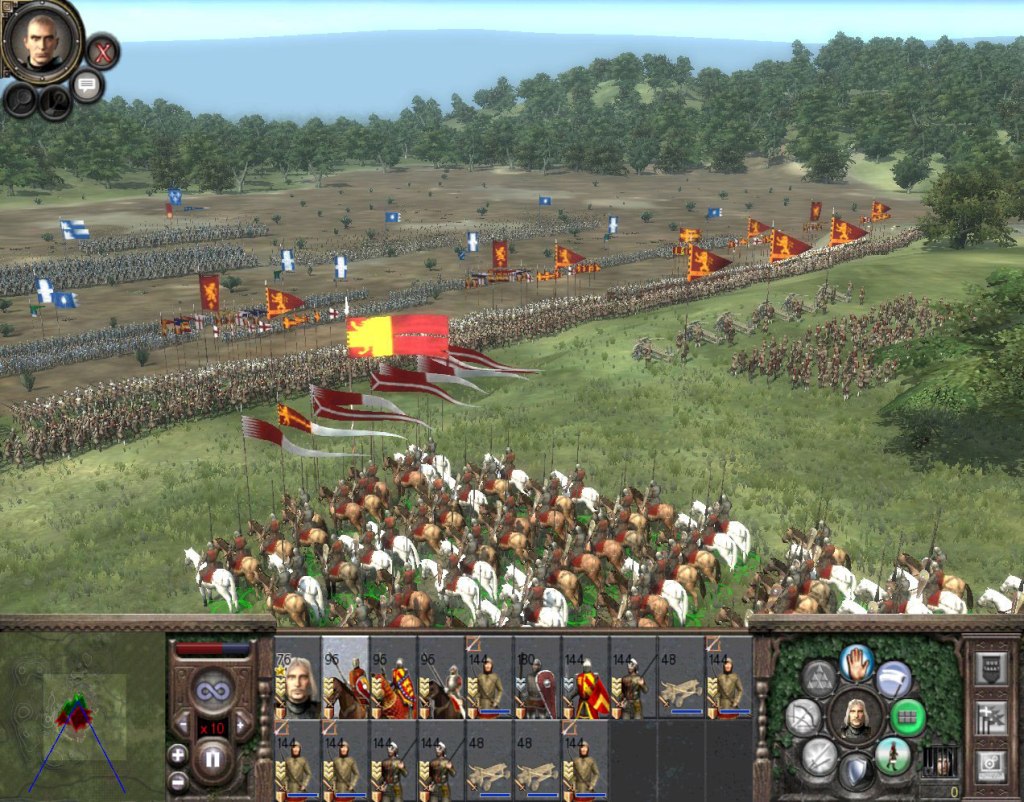I’ve been playing Bohemia’s Interactive spiritual successor to Operation Flashpoint, Armed Assault series since I got my hands on a copy when I was about 15 years old. Never ever have I played one single mission of the campaign. I totally got lost on it when I saw that magic six letters word: EDITOR.
Ever since 2007 I’ve been building my own missions in ArmA. For over 10 years I’ve recreated pretty much any war scenario you can imagine in every single scenario from 1939 and beyond: Street by street, block by block fighting; Compound raiding; Base Defense; Counter-Insurgency; Infiltration and Snipping missions; Airstrikes; UN convoy escort missions; Counter Battery Firing missions and the list goes on. From Kosovo to Iraq and Syria, if you can imagine a scenario for the last 30 years, i’ve played it in an Armed Assault. Heck, in World War 2 I’ve battled in the snow covered streets Stalingrad and parachuted head first into the blazing guns of the german Normandy AA guns. I’ve recreated more movie scenes in the ArmA editor than any normal person has the right to say it did such thing. I did this until, until… Well, until yesterday you could find me uploading even more ArmA screenshots into my steam screenshots page.

Disclaimer: This piece is just a collection of thoughts that lack any empiric evidence and are barely anything more than a bunch of academic ideas on the subject of teaching journalism using video games
But lately it’s not only the (for the most part) limitless possibilities that the editor offers that’s been drawing me into ArmA’s latest iteration, ArmA 3. You see, life made me a part time journalist. No, oh no, not “that” kind of journalist that has a blog or a website in the internet that nobody cares about.. oh! For real, tho! Life made me an amateur historian and an academic journalist. My field of studies has always been new ways to create and improve all journalistic practice and a better ways to teach practical journalism that does not rely in overused exercises that barely teach anything new. Doing actual journalism while studying at university is also complicated and not everybody has the means or the free time to do so. Academia has been in dire straits when it comes to incorporate the “in the field” journalistic practise into the university classrooms for quite some time now.
I’ve been think about a videogame that was able to do just that. See, the problem with videogames and teaching journalism is that, in order for a videogame to be remotely good as a teaching tool it needs to have, at least, two very basic set of features:
1-It must be simple to use and understand for a very different audience with a really diversified background in computer and software usage and understanding.
2-It must allow for creative use and real time control of it’s digital environment as a way to create new an interesting situations on the fly to keep things fresh and varied from one exercise to the next.

It wasn’t until ArmA 3 that both of this characteristics finally got together with a feature called “Zeus”. This is an in-game module you can attribute to a digital character to turn it into the Game Master. Allowing the player, now game master, to create and develop situations on the fly from a basis of ideas and situations. Take for example:
A company of soldiers is tasked with performing a patrol alongside a dangerous area in northern Iraq. There are high chances of enemy encounters, as previous patrols have been greeted with a hail of bullets from an unknown source. You are part of a team of journalists that’s been tasked to report on those patrols (and thanks to mods, skins for journalists actually exist for even extra immersion!) so you pack up your things and get ready for the incursion.
In a fully scripted mission, things will always go according to plan and the result would be pretty much the same as the student would not be an active member fighting, so we could never change the outcome of the mission. As soon as the first playthrough with a student was done that was pretty much it. No need for a second replay, all the tricks would be up the students sleeve, they now know when they’re going to be attacked, where the fire comes from, who is firing at them, what is going on and how that is going to end. They know what to expect, the element of surprise, the attention required to submit a report after is non existent, the exercise would be pointless if done more than once. We need a system that allows us to change things on the fly.

When you have someone that can, at will, change the entire set of rules on the go, the one that’s in the skin of the journalist will never know what to expect. In the first exercise fire can come from inside the south, in the second form the west. An engagement might not even happen, on another it might be a small incident of friendly fire. One mission might end up with no casualties. The Game Master might decide to spawn OPFOR reinforcements, might even spawn indirect artillery fire for the BLUEFOR. Civilian casualties might happen in one instance and not in another. Heck, one of them might even end up with the journalist getting killed.
The point is this, the ability of changing the landscape of play in real time provides endless possibilities for exploring the journalistic narrative and is, as far as I know, the best way to practice interactive storytelling in a controlled and safe environment with a lot of unpredictability on demand that the student must face and understand, in order to create a report on what he was supposed to be reporting on. Not only that, but exercises like this can teach students to work in a team as a way to cover multiple angles of the incident.
The classroom application of such methods must be done with special attention to do not undermine less tech savvy students. That’s why it is so important to have a simple UI and key layout for them to use and feel comfortable with. The students playing the journalists must use the least amount of key possible to move and look around, to crouch and prone, jump over fences, to zoom in and out and to take screenshots. According to the current control layout of ArmA you would need 7 keyboard keys to navigate the environment and a mouse to look around and zoom. So far so good. Nothing you can’t teach in a matter of a few minutes to students.
The hardest part of incorporating such systems into a classroom might be the lack of proper interactivity for an entire classroom of people. Standart exercises have the advantage of being able to be resolved by a very large number of people in a very short amount of time. While an exercise like this is really intriguing for a small class of students, and you can work at a max of 3 at a time, with an exercise averaging about 15 to 20 minutes. 30 Students would need a 7,5h-10h to run the entire class. Pretty much impossible and unwieldy. So how does one fix this problem of interactivity?
The teach (Game Master) could have his screen projected into the classroom board. So a team of 2 to 3 students (in-game reporters) would be playing at one time, while the entire exercise is streamed to the other students. At the end of the exercise it would be interesting to see the students that were involved in the game environment share their experiences of what they think they saw versus what the rest of the classroom really saw happening and at what conclusions they would reach.
Not only would they be able to discuss such ideas as how journalism is a social construct and that the journalist will always lack a birds-eye view of what he is reporting on, and that he is inherently coerced by his limitations to have a focused vision of reality. I personally cannot think of any way to replicate this kind of complex academic discussions in such an interactive, interesting, discussion-inducing and palpable way. Where not only you argue if journalism or journalists are limited in their ways, but you can really show to what an extend those limitations truly exist and reflect on their work?
You see the BLUEFOR on the lower left side of the screen, with the journalists in purple. In red, the OPFOR occupy a nearby radar station. The game master and the entire classroom can see the total amount of troops for each side, their composition in the “EDIT” tab. They know the terrain and the distances. They have a really good view over the scene that is about to unfold. Each movement from whatever side can be fully tracked by the students watching.
Widely different right? They are barely able to see the forces they are supposed to be with. Three combat vehicle and few BLUEFOR. And this is in third person view. In first person their situational awareness gets even more confined.
Just as the skirmish unfolded between the two forces this is what the journalist is able to see of the enemy positions when he follows the troops.

He can barely see anything, he knows their position but it is unable to spot who’s firing, where the fire is coming from and what is the situations of the BLUEFOR groups around the battlefield.
This not only proves that the journalist is only able to get a glimpse of the full picture of what is trying to convey but also that no matter how many people he has working with him, their individual visions will only be small pieces of a very big and complex puzzle. The best part of it is that there is still a huge unexplored potential for future improvements in journalistic teaching using video game technology and ArmA 3 is just a small step into and an amazing tool one can use to explore the limitless possibilities in teaching. This example is just a simple one, using the combat mechanics of ArmA 3 to create a situation that can be explored from a journalistic point of view, but situations don’t need to be limited to the battlefield. While the tools and mechanics at the disposal favour this kind of ideas, one is not limited to them.
Anyways, this is not supposed to be a deep academic essay, just a few ideas wrapped up together very fast to improve and think upon. If you wish you
Follow Strategy and Wargaming Socials
If you enjoy Strategy and Wargaming, then you need to follow its socials. Are we the best strategy gaming website around? I would say so. Heck, what other options do you have? The Wargamer? Please.
So why not give us a follow on the cesspool that is Twitter, or join the 1000 other geriatric patients on Facebook? Or subscribe down below? Or maybe do everything? I don’t care, I’m not your grandmother.
If you enjoyed the article, consider buying me a coffee!
I’ve been running Strategy and Wargaming at my own expense since 2017, with only the ad revenue to cover the hosting, with everything else being done by me. So, if you’re an avid reader, you can afford it, and want to support the website, please consider Buying Me a Coffee by clicking this link, for as low as one euro! If you do, just know that you’re helping out a lot and contributing so that Strategy and Wargaming can continue growing!

are free to take them if and as you want, experiment and improve them.






Leave a comment